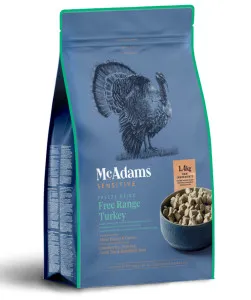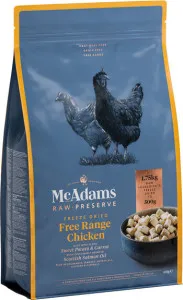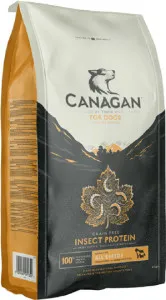To tell if your dog food is low in fat, check the guaranteed analysis on the label—fat content should be below 10% for dry food or under 5% for wet food. Look for lean protein sources like chicken or turkey, and avoid high-fat ingredients such as animal by-products, lard, or excessive oils. If you're unsure, use our Pet Food Analyzer for a quick evaluation.
Why Does Fat Content in Dog Food Matter?
Fat is an essential part of a dog's diet, providing energy and supporting skin and coat health. However, too much fat can lead to obesity, pancreatitis, and other health issues—especially in less active or senior dogs. Low-fat dog food is often recommended for dogs with sensitive stomachs, weight management needs, or certain medical conditions.
How to Identify Low-Fat Dog Food
1. Read the Guaranteed Analysis
The guaranteed analysis on dog food packaging lists the minimum percentages of crude protein and fat, as well as maximum fiber and moisture. For a low-fat option:
- Dry food: Look for fat content under 10% (ideally 5-8%).
- Wet food: Aim for less than 5% fat.
- Lean proteins: Chicken breast, turkey, whitefish, or lean beef.
- Healthy carbs: Sweet potatoes, peas, or brown rice.
- Minimal fats: Avoid lard, tallow, or generic "animal fat."
- Vegetable oils (unless specified as omega-rich flaxseed or fish oil).
- Butter or cream.
- Cheese or fatty meat trimmings.
- Proteins: Skinless chicken, turkey, cod, or egg whites.
- Carbs: Pumpkin, green beans, or oatmeal.
- Healthy fats (in moderation): Flaxseed, salmon oil, or coconut oil.
- Has a history of pancreatitis.
- Is overweight or less active.
- Experiences frequent digestive upset.
- Is a senior with slowing metabolism.
- Compare multiple brands using the guaranteed analysis.
- Opt for brands with transparent sourcing (e.g., "chicken" vs. "poultry by-product").
- Monitor your dog's weight and energy levels after switching foods.
2. Check the Ingredient List
Ingredients are listed by weight, so the first few items tell you the main components. Low-fat dog food should feature:
Be cautious of vague terms like "meat meal" or "by-products," which can include higher-fat cuts.
3. Look for AAFCO Statements
The Association of American Feed Control Officials (AAFCO) sets nutritional standards. A label stating "complete and balanced for adult maintenance" often indicates moderate fat levels, while "weight management" or "light" formulas are typically lower in fat.
4. Avoid High-Fat Additives
Some dog foods add unnecessary fats for flavor or texture. Watch out for:
Recommended Products

McAdams Freeze Dried Free Range Turkey is an excellent choice for how to tell if dog food is low in fat?. This dog food contains Boneless Free Range Turkey 86.5% and other high-quality ingredients that promote overall health.

McAdams Freeze Dried Free Range Chicken is an excellent choice for how to tell if dog food is low in fat?. This dog food contains Boneless Free Range Chicken 86% and other high-quality ingredients that promote overall health.

Canagan Insect is an excellent choice for how to tell if dog food is low in fat?. This dog food contains Freshly Prepared Insects (27%)* and other high-quality ingredients that promote overall health.
Common Misconceptions About Low-Fat Dog Food
Myth 1: Grain-Free Means Low-Fat
Grain-free dog foods often replace grains with high-fat ingredients like lentils or chickpeas. Always check the fat percentage—some grain-free options are actually higher in fat than traditional formulas.
Myth 2: All "Light" Foods Are Low-Fat
While "light" or "weight control" foods generally have less fat, some simply reduce calories by cutting carbs. Verify the guaranteed analysis to be sure.
Myth 3: Fat-Free Is Better
Dogs need some fat for energy and nutrient absorption. Ultra-low-fat diets ( <3%) should only be used under veterinary supervision.
Best Low-Fat Dog Food Ingredients
If you're preparing homemade meals or selecting commercial food, prioritize these low-fat ingredients:
When to Choose Low-Fat Dog Food
Consider a low-fat diet if your dog:
Always consult your vet before making dietary changes, especially for medical conditions.
Final Tips for Choosing the Right Food
Still unsure? Our Pet Food Analyzer simplifies the process—just enter the food details, and we'll assess the fat content and overall quality for you.
